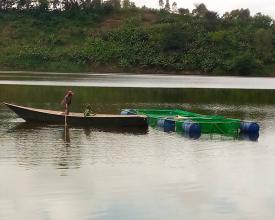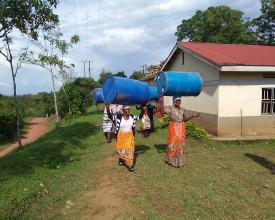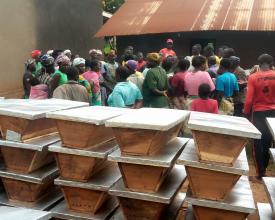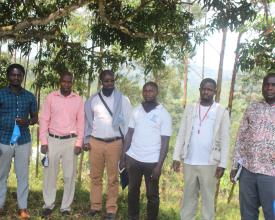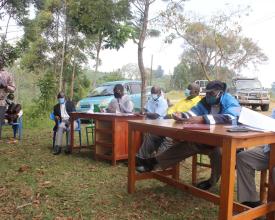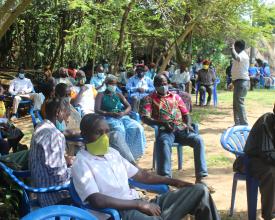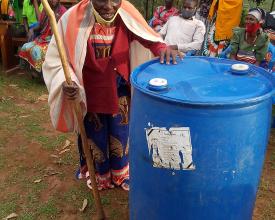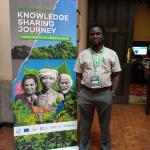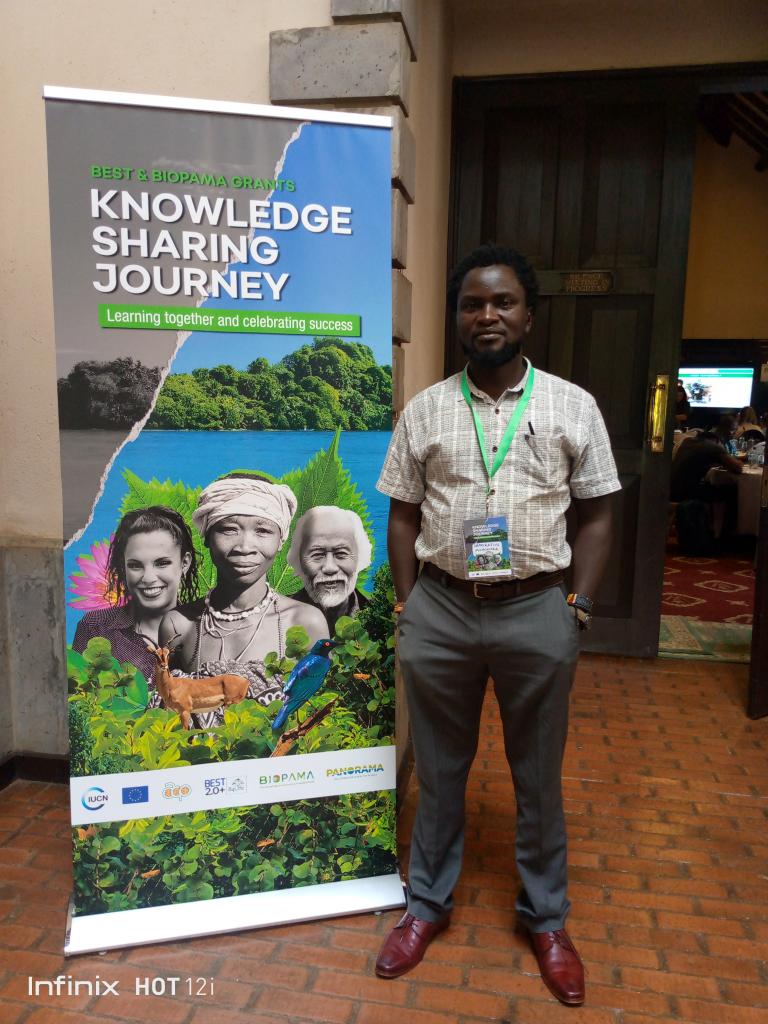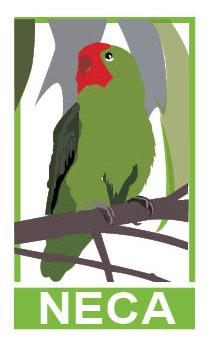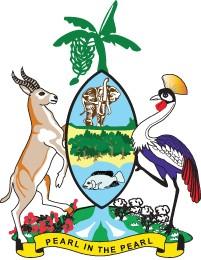
Improving socio-economic livelihoods of local communities to foster wetland restoration/regeneration and sustainable use of natural resources in Nzuguto community wetland
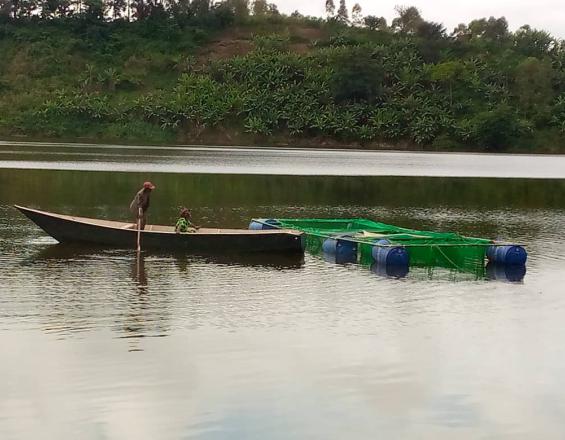
The estimated 56.6hecatres Nzuguto wetland system, is the biggest water reservoir, as well as a catchment for streams draining from Lake Mugogo and Nkugute in the south and Katsyoha-Kitomi forest reserve in the east. Management is mandated at the local government together with host communities. Strategically located in the middle of several villages, the wetland has been subjected to threats due to unregulated access that has seen 90% of its buffer reclaimed for agriculture, afforestation, brick manufacturing; leading to vegetation loss, soil and water loss; poor water quality, hence creating an unhealthy environment unable to support the wildlife within. With grant from IUCN, funded by EU, under the BIOPAMA Action Component, Rubirizi District LG implemented a project that promoted the improvement livelihoods of the host communities, whilst enhancing natural regeneration and restoration of Nzuguto wetland through household/individual level engagement and support.
Context
Challenges addressed
- Uncontrolled human activity; harvesting craft materials, fuel wood extraction, harvesting poles and logs for construction, charcoal burning, fishing, poaching, encroachment for agricultural purposes, uncontrolled burning etc.
- Loss of water due to poor agricultural practices at the edge of the wetland - reclaimed for crop growing, afforestation and brick laying
- Excessive harvest of wetland products like Papyrus
- Reduction of the indigenous tree species
- Threats to the Grey crowned crane breeding habitats due to constant fires, as the wetland is a prime breeding habitat for the species
- Poor agricultural practices, as using pesticides and fertilizers have disrupted water quality
- Water cycle and drainage disruption
- Increase in vermins and problem animals like monkeys due to destruction of their habitats
- Abject poverty in the area due to unemployment, lack of alternatives for income generation
- Increase in diseases and malnutrition due to an unhealthy environment
Location
Process
Summary of the process
Seeking political bleesing of all initiatives in the governement structure are very crucial for the success of any governement project. This is the reason why it was the first step in the process.
Having the general public views and opinions, plus introducing them to a new undertaking in their community, combined with neccesary trainings and education, are also parts of succesiful project implementation. Thus, all the building blocks are connected as they represent project implementantion cycle.
Building Blocks
Political actors and technical personnel engagement
This helps to orient and introduce the project idea to the relevant officials working with the district/administrators directly or indirectly involved in the project. This was meant to avoid any future audit queries, conflicts arising from implementation of activities. These involved local councilors, local council or village chairmen, district political leaders, environmental police, internal security organizations, district administration officials, district technical staff from different departments(finance, procurement, natural resources, community development, engineering etc). This included other private stakeholders doing more or less similar projects, lodge owners etc. The engagement involved an organized project launch activity or ground breaking ceremony to educate them on the project anticipated activities, locations/areas, budget, beneficiaries, potential risks and the anticipated outcome, plus seeking their input and support for the success of the project. This also involved field visits to access the situation on ground before implementation.
Enabling factors
- Knowledge of the scope of the project, political boundaries and administration, scope of work of all the political and technical actors and their relevance in the implementation of the projects.
- Mode of communication and ability to reach them - official written communication inviting the leaders and officials to the event.
- Budgeted funds in the project to facilitate day allowance /transport refund/field visits.
Lesson learned
- Some of the local council leaders, are farmers and it was discovered that they are undertaking activities in the wetland and they were quick to embrace the prospected project activities and showed the will to offer personal advice.
- This demonstrated the best practice for overall conceptualisation of the project idea by the stakeholders involved.
- In this event, overall community members of anticipated beneficiaries were not invited. This was done on a different occasion, though it would have been time and resource saving to have them on this one too to help them prepare for the sensitization and education workshops ahead.
Sensitisation of potential beneficiaries and affected persons
The purpose was to bring together all the affected persons, the potential beneficiaries and all the concerned community members, partners to introduce to them the project idea, its anticipated impacts both negative and positive, whilst explaining the responsibility of the community members their roles during the implementation. This was also meant to get the different views and ideas of members to aid the successful implementation of the activities of the project. It was also meant to share with the community members the relevant knowledge required to utilize the wetland and its various resources/products sustainably in order to live in harmony with nature. The engagement involved teaching the members the need for their participation for each step during implementation. Different individuals or households were engaged in different activities in the wetland. This sensitisation meeting further explored how each activity in the wetland can be carried out to minimize negative impacts and maximize positive impacts both economically and environmentally. A call for a community meeting was announced on radio, church gatherings and other media. This was a continuous activity throughout the implementation of the project.
Enabling factors
- The grant budget took into account communication expenses, plus conduction mass sensitization meetings.; refreshments were catered for.
- The ability to reach every member of the community through local council leaders, mass gatherings including the initial project launch event that was used as another platform for passing the information.
- The willingness of most members of the community to conserve natural resources especially those who were already organized in the community based environmental conservation organisation.
Lesson learned
- Some members attended the meeting out of curiosity knowing that the project activities may negatively impact on their activities in the wetland since they were involved in illegal and destructive activities.
- Expectations in terms in the beginning were so low, and the mood changed gradually after learning of the several benefits that the project was coming along with, including alternative sources of income.
Education and training of direct beneficiaries
- This was meant to give hands on knowledge to the beneficiaries in accordance with the activities engaged in. The main targets were those who would benefit from alternative sources of income. already existing practitioners in aquaculture, apiary etc and the new ones alike were taken into consideration. Individuals, homesteads, member groups/associations were trained in categories; Fisheries, Apiary development, and Crop growers. different training sessions were organised for each category.
- This helped members to know what awaits them, how to plan and manage it sustainably to improve their livelihoods.
- Education and training was a continuous process throughout the implementation cycle of the project.
Enabling factors
- The technical team of the project included experts or officers in the respective areas/fields namely, The Entomologist for Apiary development projects, the Senior Agricutural Officer for crop growers and the Fisheries Officer for the Aquaculture projects.
- The grant budget had sections of these trainings well facilitated.
- There were already existing organized groups and individuals in the respective categories and some members were already involved in the ventures like aquaculture and apiary development.
Lesson learned
- Some members attended the meeting out of curiosity knowing that the project activities may negatively impact on their activities in the wetland since they were involved in illegal and destructive activities.
- Expectations in terms in the beginning were so low, and the mood changed gradually after learning of the several benefits that the project was coming along with, including alternative sources of income.
- There was a considerable number of individuals who showed interest in joining groups if there were any or just sharing on the benefits on individual benefit.
Provision of basic needs and income generating alternatives
This building block concerns bring tangible benefits of the project to direct beneficiaries. The household basic needs like energy saving stoves, rain water harvesting gadgets and protected springs were meant to reduce access and amount of pressure to the wetland and its resources. The alternative income generating items like fish cages and fish ponds, bee-hives were meant to support individuals, households, groups or associations to enhance their economic livelihoods, so as to shift from wetland resource extraction for commercial purposes to extraction for domestic use only.
This involved a process of identifying/selecting direct beneficiaries, in the form of individuals, households, groups or associations which was done with the help of local council leaders, and attendance lists of members attending several sensitization and education workshops. Local council leaders were helpful mostly in identifying the vulnerable or marginalized households like the handicapped, elderly, poor youth and women.
Enabling factors
- The grant budget included all the supplies.
Lesson learned
- There was never enough to cover all the members of the villages.
Impacts
Project activities have significantly reduced encroachment especially by members owning arable land at the edge of the wetland brought about by different interventions and engagements during project implementation. There has been a commendable change of attitude/mind-set by the local people towards conservation of the natural resources in their community. This has been brought about by opportunities that came along with the project including direct employment by the project in terms of casual labour force , apiary and fisheries projects, community empowerment to own and manage their own resources for future generations, basic household items handouts, safe water access through the protected springs etc. close to 200 households have benefited from the above. This has further been manifested by a sense of pride and belonging, self-esteem that is evident amongst local women and youth praising the impact of BIOPAMA project in their area; brought about especially by the formulation of a wetland management committee among the community members.
Since the inception of this project, there is a visual and evident regeneration of the vegetation especially in the wetland, as compared to the last couple of years due to reduced access by the local people.
Beneficiaries
- Direct beneficiaries over 170 homesteads amounting to approximately 1,000 inviduals!
- Kamweru Fishermen Association 35 MEMBER ASSOCIATION
- Nzuguto Fish Farmers Association 10MEMBER ASSOCIATION
- Nzuguto Beekeepers Association 16MEMBER ASSOCIATION
Story
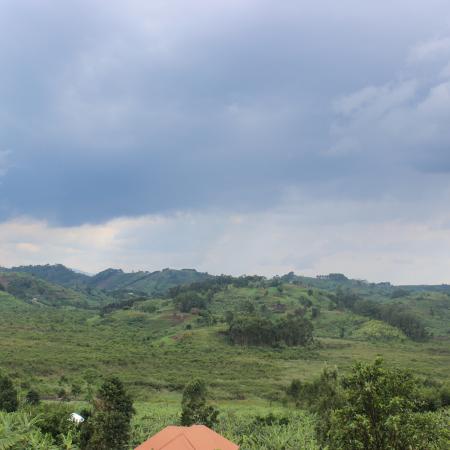
In the mid 80’s, we only had two sources of water in our village. One gravity flow scheme community tap water, and another natural source in Nzuguto wetland. The tap water was unreliable especially during the dry season. Unlike Nzuguto wetland source that was permanent throughout the year, with permanent pools,streams in and out. The vegetation was impenetrable with lots of different species of trees, grasses, papyrus sections, palm trees, wild ginger plants etc. There were also several species of animals like black and white colobus monkeys, Vervet monkeys, sitatungas, mongoose, genet cats; reptiles like rock pythons, fish plus several species of birds.
The human population was low at the time, and everyone would find their way in the wetland, harvest as much as they could for domestic use without causing any threat.
Between mid 90’s and early 2000’s, new human activities like commercial charcoal burning, firewood collection, brick laying, emerged in the wetland. Hunting for antelopes and other mammals intensified and encroaching for agricultural activities for people to expand their arable land also increased. Constant fires to clear the bush for access were becoming rampant.
Toward mid 2000’s monkeys like the colobus, Sitatungas were wiped out; wetland buffer began to shrink, and big trees were cut down. As a result, by the end of 2019, we had started experiencing water shortage in the wetland. The permanent streams and rivers started drying out in dry season. The situation kept on getting worse and affected the nearby crater lake whose source is from the wetland.
Until 2015, I joined a community based organization dubbed Environmental Conservation Association whose objective was to improve livelihoods of the local people whilst conserving the environment with Nzuguto wetland as their main focus. I joined and sensitized members about sustainable use of the wetland, introduced ecotourism activities by creating tourist trails in the wetland, motivated members by lobbying for support from tourists.
For the first time, I saw a natural regeneration of the habitats, a motivated community; until 2020 when the COVID -19 Pandemic Lockdown set it. The communities resorted to a NATURAL RESOURCE –BASED LIVELIHOOD and the wetland experienced its historical destruction.
Thanks to BIOPAMA Rapid Response Grant, we are registering great success in restoring this great habitat!

